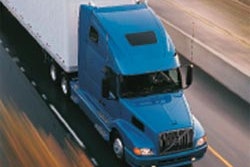VITAL STATS
Much of the Southeastern United States is within an eight--hour drive, including Memphis, New Orleans, Atlanta and Cincinnati.
Population: 1 million
Land Area: 2,091 square miles
Big Business: Food and beverage account for the largest share of employees in the manufacturing sector.
It’s The Real Thing: The world’s first franchised Coca--Cola bottling plant was built in Chattanooga, also home to the famous Choo Choo.
Chattanooga is one of the most desirable food manufacturing locations in the country, says Trevor Hamilton, vice president of economic development for the Chattanooga Area Chamber of Commerce. "We can reach nearly one--third of the major U.S. markets within one day’s drive from Chattanooga."
In fact, the transportation hub includes three major interstate highways that intersect in the area: I--75 for north--south access, I--59 for southwest access, and I--24 for west access. Two Class 1 railroads, the CSX and Norfolk Southern, provide excellent rail service.
The Chattanooga metropolitan statistical area encompasses six counties––three in Tennessee and three in Georgia. The area draws its labor force from the surrounding 18 counties, with a population of about 1 million people.
The region is located within an hour and a half from Atlanta, Birmingham, Nashville and Huntsville. Other major cities such as Lexington, Louisville, Memphis, Charlotte, Cincinnati, Tallahassee, Jacksonville, Raleigh and New Orleans are accessible within an eight--hour drive.
The largest single distribution facility in Chattanooga is General Mills, operated by leading 3PL Kenco Logistics Services. "We have more than 70 common transportation carriers located in our greater Chattanooga area, two of which––U.S. Xpress and Covenant Transport––are among the nation’s largest," Hamilton says.
"To give you an idea of the concentration of the food industry here, food and beverage manufacturing accounts for the largest share––18 percent––of employment in our manufacturing sector," says Hamilton. Many companies are using incentives offered through the Renewal Community Program, a federally legislated program available in select communities. "This program has helped us revitalize our central business district which had been distressed," explains Hamilton.
Pilgrim’s Pride and Koch Foods, for instance, used tax credits on expansions each underwent last year. And as for employee tax credits, they are available for companies employing individuals living within the Renewal Community area. "There are also accelerated depreciation tax advantages companies can use as they invest in new plants and facilities," Hamilton continues.
Tennessee mandates no property taxes on goods--in--process, inventoried finished goods, inventoried for--sale merchandise, goods--in--transit or government--required pollution control equipment.
The area supports a number of industrial parks. For example, Enterprise South is a newly developing industrial park with about 1,600 available acres and its location adjacent to I--75 make it an excellent spot for food companies to locate.
"Currently under construction is a dedicated interchange off I--75 and the location is very close to I--59 and I--24, so it’s well--situated for over--the--road transportation of products to market," says Hamilton. The park is rail--served and is served by industrial--grade utilities, with water and sewage treatment capacity readily available to meet the heavy demands of the food and beverage industry.
Center South is another industrial park offering sites conducive to food companies. “There is a port facility on site that could provide barge service and Norfolk Southern is currently serving companies in the park,” says Hamilton.
"Chattanooga Manufacturers Association is the country’s oldest manufacturing association and this speaks to how important the manufacturing segment is for us," Hamilton says.
The area is undergoing a renaissance, transforming itself from its bustling industrialized past into a cosmopolitan city with amenities matching those of large metro centers throughout the country.
"We are just the right size so people can get a real sense of community here," says Hamilton. The city is undergoing a $120 million revitalization of the waterfront, which will include a salt--water aquarium. "These upgrades will continue to build upon the quality of life here, making Chattanooga a great place to live, work and play."
-----------------------------------
Farley’s & Sathers Candy Co. Inc.Sweet Success
"The Chattanooga area is a great location for us, because we can distribute to the entire eastern half of the country from here," says Mark Hilling, plant manager of Farley’s & Sathers Candy Co. Inc.
In fact, the Chattanooga facility has an advantage over its sister facility in Minnesota. "From a geographical point of view, our plant in Minnesota covers a lot more land area, but we reach a greater consumer population as we supply as far west as Memphis and Chicago and we ship to all of the major Northeast and Southeast markets," Hilling says.
Farley’s & Sathers operates a corporate office and packaging facility in Minnesota, and a candy manufacturing plant in Des Plaines, IL, in addition to the Chattanooga packaging facility. Products are manufactured at the Des Plaines facility and the company also uses outside contract manufacturers to produce candy that is shipped to Chattanooga for final mixing and packaging into Farley’s & Sathers candy packages. "We also purchase branded candy products from other manufacturers which we mix into our Farley’s & Sathers branded products," explains Hilling.
From a distribution point of view, the facility is close to I--75 for north/south access and I--24 for east/west transit.
The company, employing about 200 people, owns and operates its own trucking fleet. "We also have a support network of independent truck carriers when we exceed the capacity of our own operations, so this is a great location for us," Hilling says. Everything on the outbound is shipped by truck.
On the inbound side, the company uses a mix of truck and rail. "We source some of our items in containers from overseas, which are then trucked to our plant," Hilling says. These include hard candies like lollipops and jawbreakers which originate primarily from Central and South America.
The company recently began testing the efficacy of intermodal on the inbound side, with containers landing in Jacksonville, FL, being shipped via rail and truck to the facility.
The company backhauls incoming product on its own fleet and those of its favorite carriers as they complete deliveries throughout North America. These incoming products could be other candy products for integrating into final candy packages or they could be supplies for the packaging side of the operation.
Farley’s & Sathers has been located in Chattanooga for more than 20 years because of Sathers’ early association with Kitchen Fresh, a manufacturer that Sathers acquired about 20 years ago.
After a number of ownership changes, Farley’s & Sathers was spun off as an independent company in 2001.
"Some consolidation was done in the network, but from a logistics standpoint, Chattanooga offered us the optimum opportunity to focus on servicing the markets we are strongest in," says Hilling.
The cost and availability of utilities, such as electricity and water, also contribute to the area’s attractiveness. "Electricity is very cost--effective and that is a big factor for us because we operate an air--conditioned and climate--controlled warehouse for our products," Hilling says.














